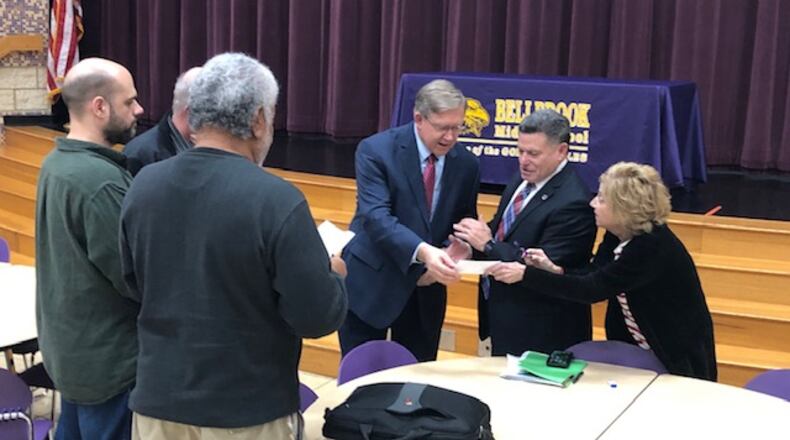RELATED: Bellbrook schools eyes budget cuts, March levy
“When I was elected to the Ohio Senate in 1985, my goal was to make school funding more simple,” Cupp told 85 people at Bellbrook Middle School. “The more I learned about it, I found if you’re going to truly make it fair, you have to make it more complicated, which is a sad thing.”
The bill has had multiple hearings in the Ohio House Finance Committee, and Cupp said House leadership wants to vote on it in 2020 so it becomes part of the state budget in summer 2021.
Cupp said the plan starts with an effort to determine a “base cost” of how much it takes annually for school districts to educate a child. That calculation considers class sizes, the need for principals and administrative staff, supply and technology costs and many other factors.
He said the base cost figure would vary by district depending on their situation, but a statewide average is about $7,100, significantly above Ohio’s current per-pupil figure of $6,020.
MARCH STORY: State considers new funding plan for schools
Districts would get add-on funding based on their levels of impoverished students, special education students, busing needs and needs in other categories.
Then there’s an assessment of each community’s capacity to raise local funds, based on a 60-40 mix of property values and median income — a major change from the current property tax-driven system.
On two hot-button school topics, Cupp said the plan would increase funding for special education, and would directly fund charter schools and private-school voucher students, rather than having state funding pass through the public school districts where the students live.
Bellbrook schools Superintendent Doug Cozad said implementing the House Bill 305 plan would be a challenge.
“They talk about a six-year phase-in and the $1.5 billion it’s going to take to implement it,” Cozad said. “The devil’s in the details of actually implementing it and finding the money to do that.”
RELATED: High-scoring public schools oppose voucher expansion
Cupp said the goal is to link funding to how much it actually costs to educate a student in each community. He pointed out that current state funding has been modified so many times with caps and guarantees that 82 percent of school districts don’t get the amount of state funding the formula calls for.
“In some cases it’s created a huge gap between what the formula says they should get and what they’re actually getting,” Cupp said. “Patches have been applied (and) it’s actually more patch than actual formula now.”
Preliminary projections from October suggest most local school districts would get a funding increase in the first two years of the plan. For most districts, those increases would be small — between 0 and 5 percent.
Bethel, Middletown and Monroe were projected for double-digit increases each year, while Kettering and Cedar Cliff were projected for 12 and 9 percent increases the first two years. Districts that saw their state funding projections remain flat included Troy, Northmont, Oakwood, Valley View and Lebanon.
But Cupp emphasized that the plan calls for a $1.5 billion increase in state funding for schools, phased in gradually over six years. He said with the state economy thriving, that’s not unrealistic.
RELATED: What changes should state make to school report cards?
“The revenue is there,” Cupp said. “It would be a matter of whether there is the will to properly allocate it.”
Local residents asked questions about the cost of the plan and how it would affect everything from busing, to private school vouchers, special education and unfunded mandates.
Many of those details are still up for debate as the bill is not out of committee yet. But Cupp said there is significant support, with 68 of 99 state representatives signed as co-sponsors.
“The task was to develop a practical, comprehensive, scalable, explainable, sustainable and fair plan,” he said. “It’s designed to be objective and fair, and apply pretty equally to everyone.”
About the Author

